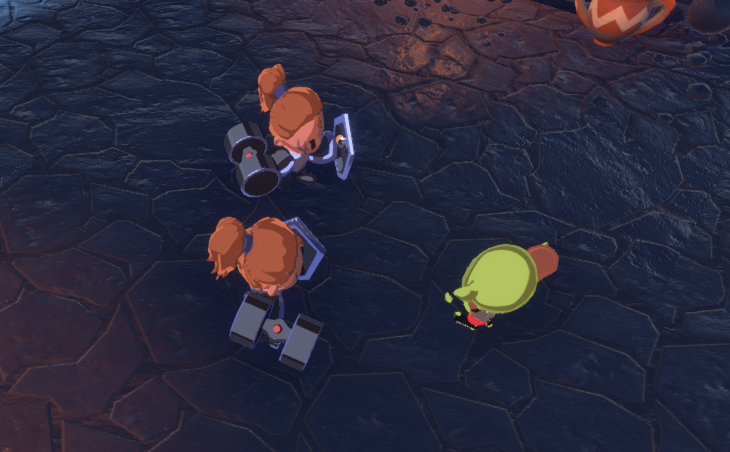RPCs vs NetworkVariables Examples
This page has examples of how the Small Coop Sample (Boss Room) uses RPCs and NetworkVariables. It gives guidance on when to use RPCs versus NetworkVariables in your own projects.
See the RPC vs NetworkVariable tutorial for more information.
RPCs for movement
Boss Room uses RPCs to send movement inputs.
loading...
Boss Room wants the full history of inputs sent, not just the latest value. There is no need for NetworkVariables, you just want to blast your inputs to the server. Since Boss Room isn't a twitch shooter, it sends inputs as reliable RPCs without worrying about the latency an input loss would add.
Arrow's GameObject vs Fireball's VFX
The archer's arrows use a standalone GameObject that's replicated over time. Since this object's movements are slow, the Boss Room development team decided to use state (via the NetworkTransform) to replicate the ability's status (in case a client connected while the arrow was flying).
loading...
Boss Room might have used an RPC instead (for the Mage's projectile attack). Since the Mage's projectile fires quickly, the player experience isn't affected by the few milliseconds where a newly connected client might miss the projectile. In fact, it helps Boss Room save on bandwidth when managing a replicated object. Instead, Boss Room sends a single RPC to trigger the FX client side.
loading...
Breakable state
Boss Room might have used a "break" RPC to set a breakable object as broken and play the appropriate visual effects. Applying the "replicate information when a player joins the game mid-game" rule of thumb, the Boss Room development team used NetworkVariables instead. Boss Room uses the OnValueChanged callback on those values to play the visual effects (and an initial check when spawning the NetworkBehaviour).
loading...
The visual changes:
loading...
Error when connecting after imps have died: The following is a small gotcha the Boss Room development team encountered while developing Boss Room. Using NetworkVariables isn't magical. If you use OnValueChanged, you still need to make sure you initialize your values when spawning for the first time. OnValueChanged isn't called when connecting for the first time, only for the next value changes.

loading...
Hit points
Boss Room syncs all character and object hit points through NetworkVariables, making it easy to collect data.
If Boss Room synced this data through RPCs, Boss Room would need to keep a list of RPCs to send to connecting players to ensure they get the latest hit point values for each object. Keeping a list of RPCs for each object to send to those RPCs on connecting would be a maintainability nightmare. By using NetworkVariables, Boss Room lets the SDK do the work.